Nobody is ever unhappy while on the edge of a swimming pool. A pool is a construction meant for providing wellness. It is an invention by developed societies that sends a direct message: I am here to make you happy. This is what happens in a village in Yucatán, in Tokyo, and in the Portuguese countryside. Throughout history, swimming pools have been used for the purpose that was meant for them. This consistency strengthens them and has allowed them to become architecture for happiness; reason why we must celebrate them. This wet journey across hotel pools from across the world is our tribute.
A swimming pool carries a great symbolic weight. It concentrates an economic, social, and aesthetic interpretation. It is a construction which, through its apparent frivolity (it is intended for swimming or freshen up) serves as an excuse to talk about architecture, an economic success, social progress (or not), or about the evolution of leisure; it even allows for chats on politics: in Spain, a political party went into crisis because its leaders bought a house with a pool. Nobody escapes its power and there is no need for a plunge in order to surrender before them. Sometimes it is enough just to see them or have them. “To have”, the verb that defines swimming pools as a social differentiating symbol, as status. But that is just one of its meanings, perhaps the less romantic one. The swimming pool is a weightlessness land, where everything weighs less. This is well known by Tadao Ando (Pritzker 1995), who designed Setouchi Aonagi in Japan, where we can find a pool’s cleanest expression; it is a sheet of water that blends with the Seto Inland Sea until they cannot get closer. Some people say the best time to visit is September, when the sun rests at its center.
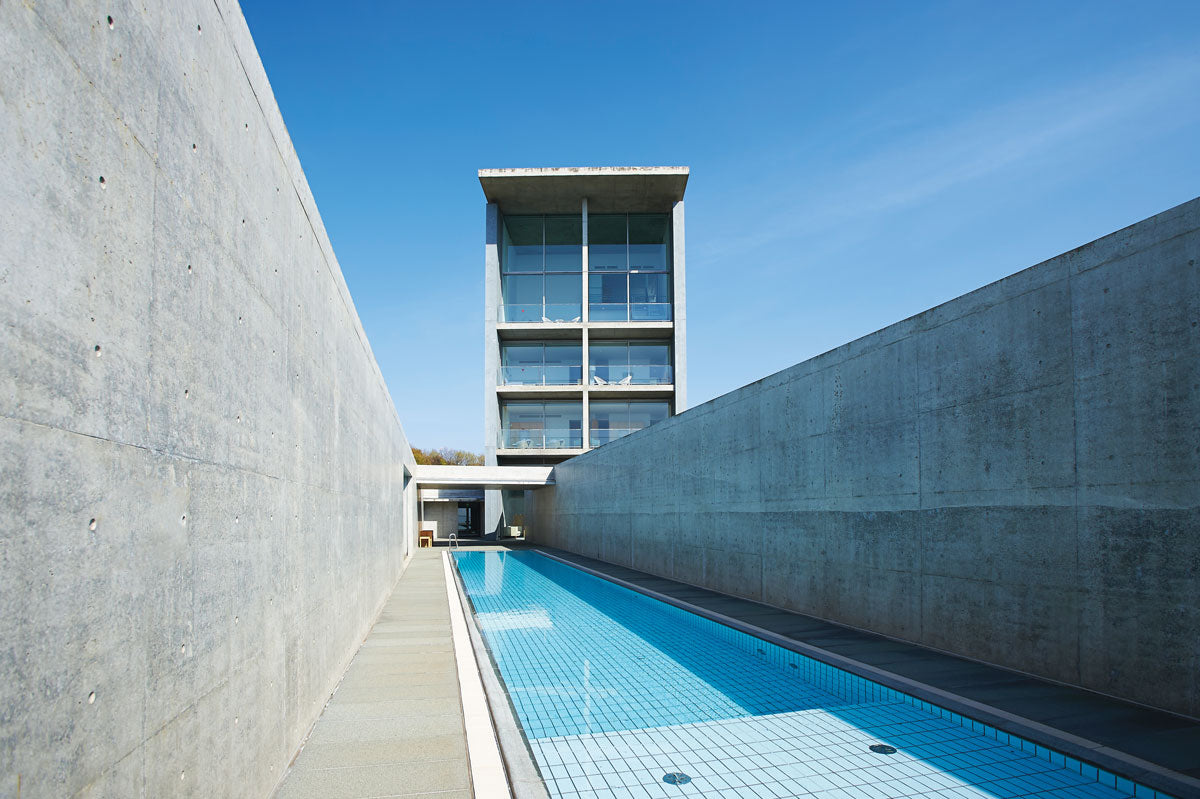
This subtleness is also present in another relevant swimming pool; the one at São Lourenço do Barrocal, a place located in the Portuguese Alentejo, which rewrites the rules of the game of what is known as a countryside hotel. This example of rural hotel post, a project by Eduardo Souto de Moura (Pritzker 2011) features several pools. There is space and silence around them. That is what luxury means, to surround ourselves with what we do not have. The main one is presided by an enormous granite rock four meters high, that refers to the name: a barrocal is a granite outcrop. This great rock also reminds us that here, history and nature rule. The pool for children, camouflaged with the landscape and made of stone, dynamites whatever we knew to be a swimming pool for kids. In Barrocal, pools are part of the message held inside José Antonio Uva’s project, his factotum: this is a place that embraces the past to invent itself a future.
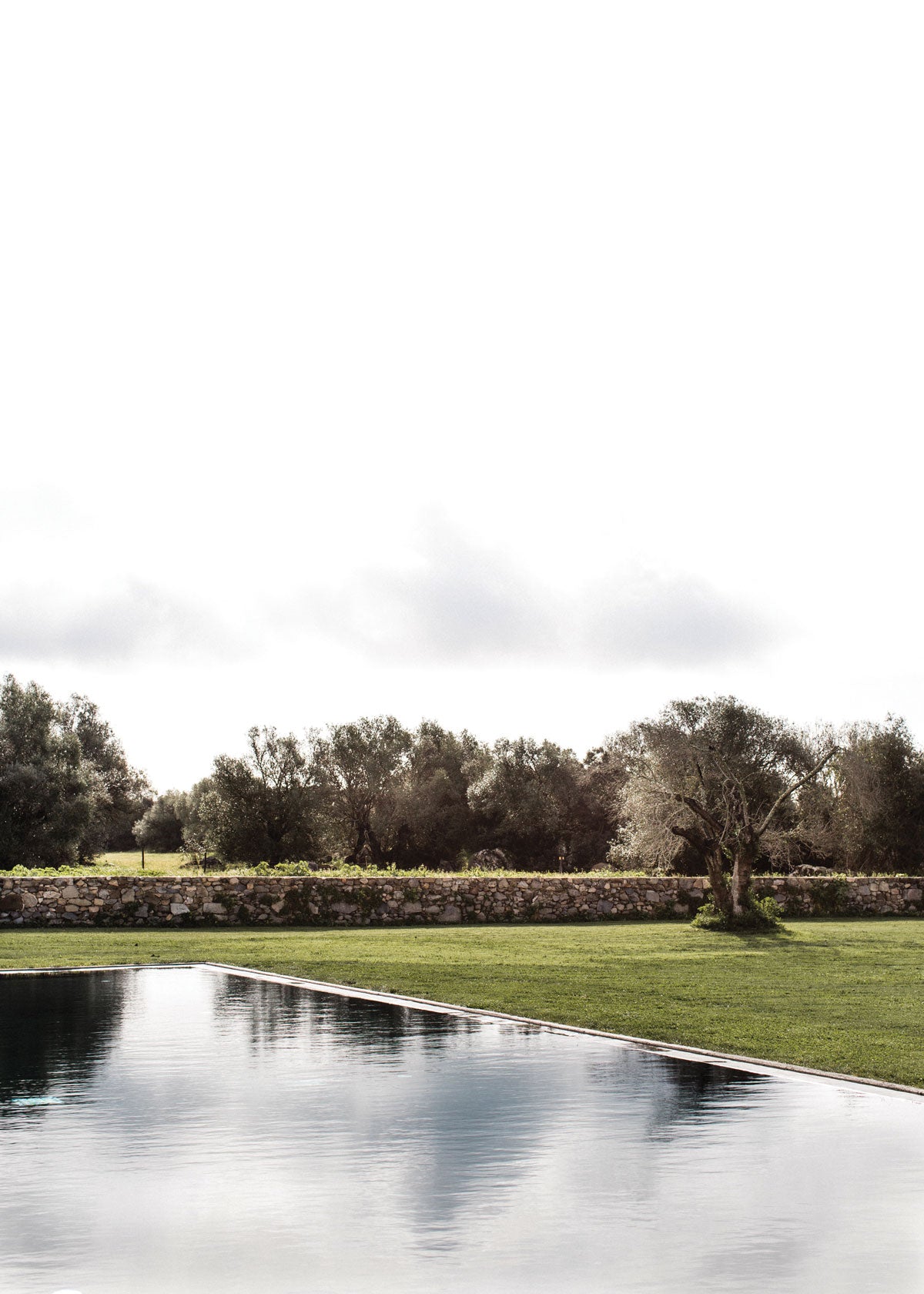
Another (different) example that blends with the environment is the one at Palacio Bucarelli. This hotel in Seville is a renovated palace-home from the 17th century, where a space was found to build a pool, which was obviously absent in the original construction. Here is the refreshing pool. In it, small and extremely discreet, almost a tank, we find the use it was created for and which we sometimes forget. All the pools in Moroccan riads (we will approach a singular example ahead), which belong to the architecture in southern Spain, have been built with this purpose: to cool down during hot months. Another similar example to Bucarelli’s is the one at Hermandad de Villalba, a micro hotel built in a Spanish village, Villalba de los Barros (Extremadura) and designed by Lucas y Hernández Gil. This two-bedroom house features a pool in a patio that feels like having a glass of water in a summer afternoon.

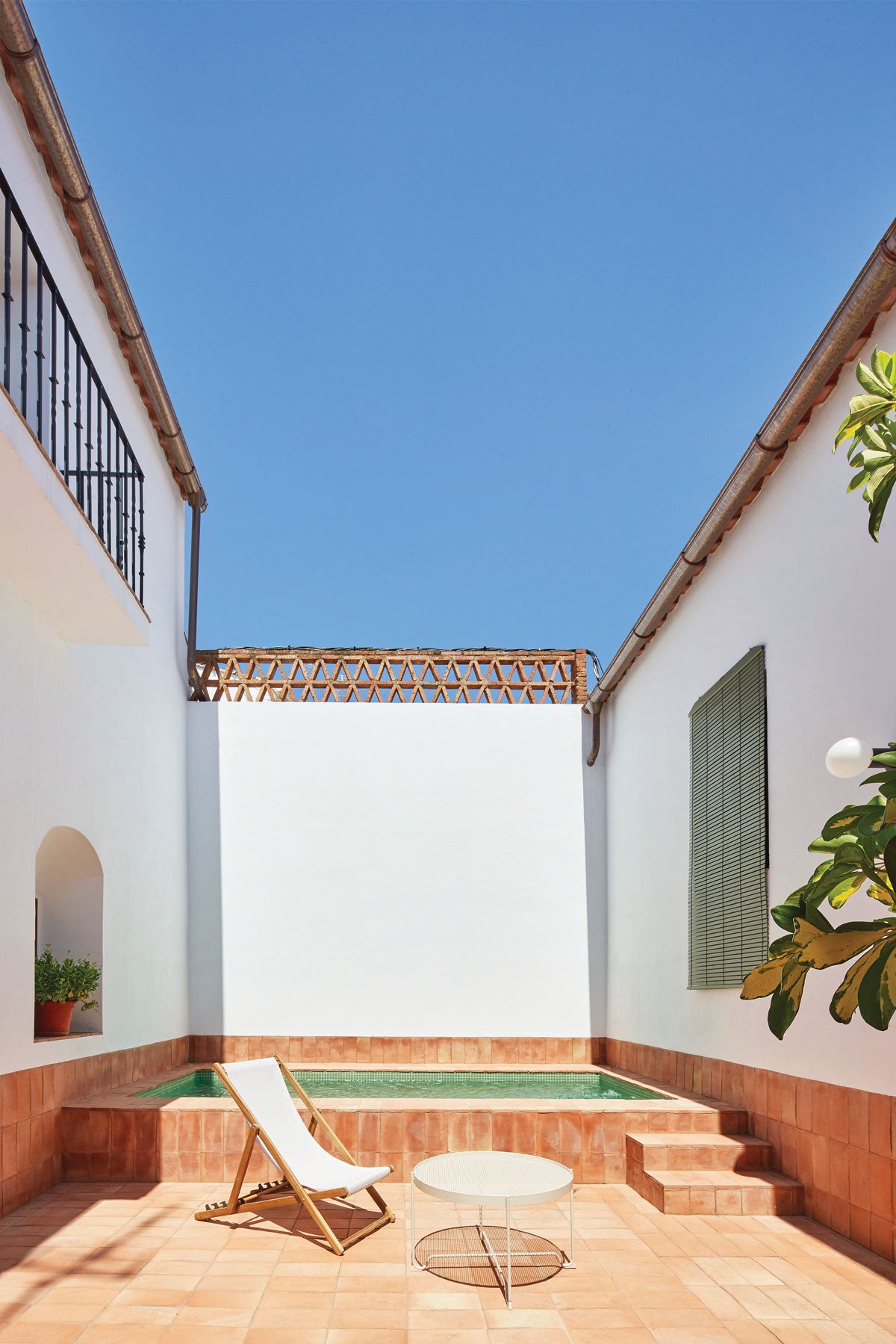 Size is not relevant. There are very expressive ones, small like bathtubs and very memorable, also large like an ocean. One example of a great pool (in both surface and beauty) is Amangiri’s in Utah, which curves around 2,322 square meters. This hotel (it is rather awkward to call it a hotel being something so special) is located in the Navajo desert. The landscape and the native culture used to rule over construction: there are no green vegetation or turquoise colors here. Instead, there is a chromatic palette worthy of a western movie; the pool could have easily appeared in a John Ford movie, had he enjoyed shooting films in swimming pools. Everything here is intended to achieve the hózhó, which is a beauty, harmony, and balance mix for the Navajo people.
Size is not relevant. There are very expressive ones, small like bathtubs and very memorable, also large like an ocean. One example of a great pool (in both surface and beauty) is Amangiri’s in Utah, which curves around 2,322 square meters. This hotel (it is rather awkward to call it a hotel being something so special) is located in the Navajo desert. The landscape and the native culture used to rule over construction: there are no green vegetation or turquoise colors here. Instead, there is a chromatic palette worthy of a western movie; the pool could have easily appeared in a John Ford movie, had he enjoyed shooting films in swimming pools. Everything here is intended to achieve the hózhó, which is a beauty, harmony, and balance mix for the Navajo people.
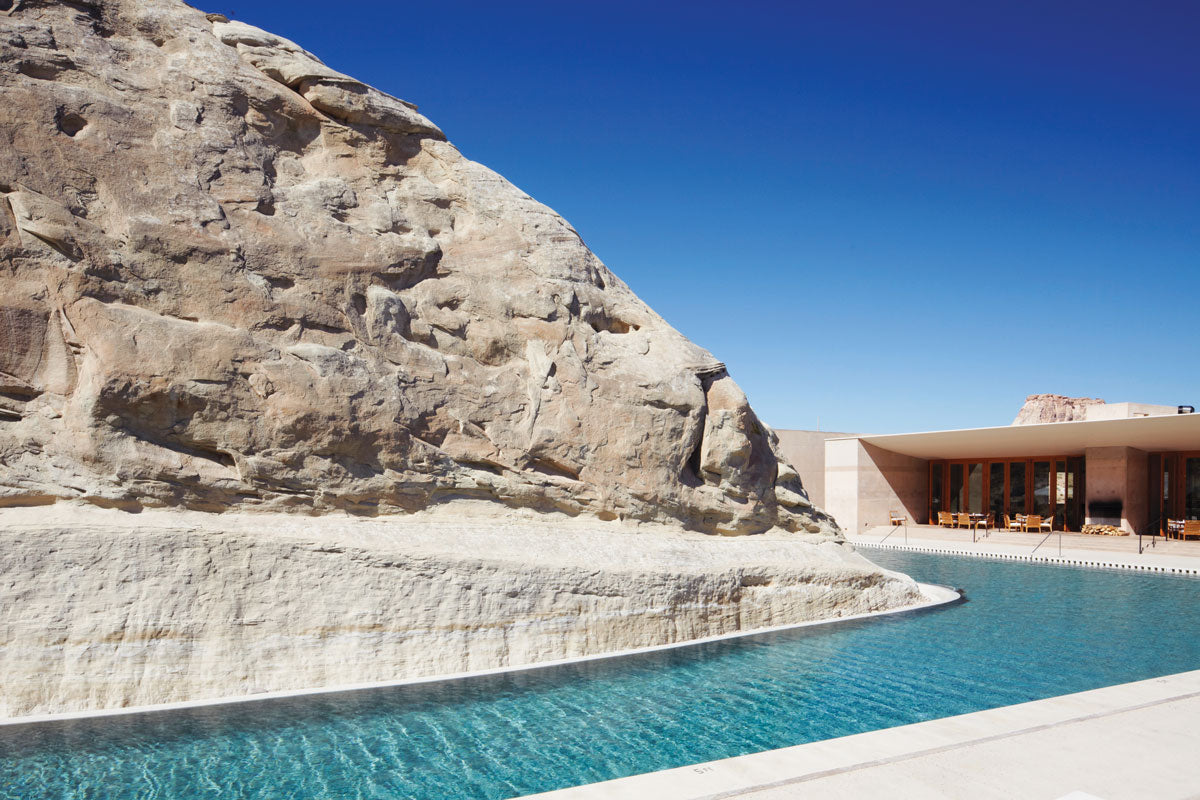
And wellness is not always reached through the Navajo peace and harmony; in contemporary culture it is usually achieved through “likes”. This unit of measurement for pseudo-affection also finds a vehicle in pools. The case of Riad Yasmine in Marrakesh made it to the news a couple of years back. Their pool was photographed and shared on Instagram so much that its fame rocketed and the hotel was soon known all over the world, as well as fully booked. A pool is always photogenic, they all photograph well: public, infinite, finite, empty, full, even sad ones… Yes, like this one in Marrakesh, featuring two-colored tiles, plants, and open to zenith photos; we are before the perfect social storm. Another example of media-enchanting pool is the one at the Manon les Suites hotel, designed by Gert Wingårdh, in Copenhagen. It belongs to this kind of hidden pools that make an impact because they are unexpected.
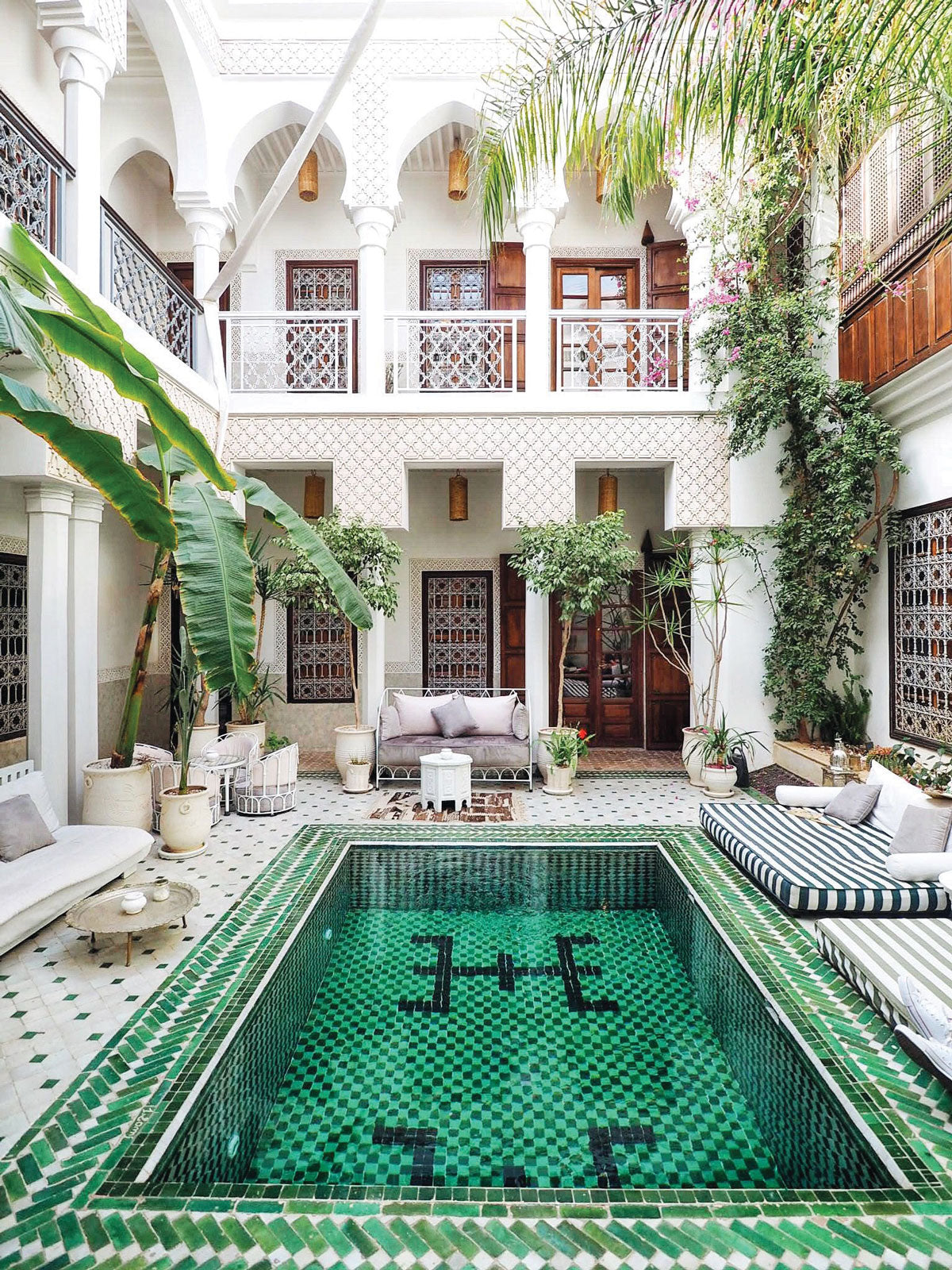
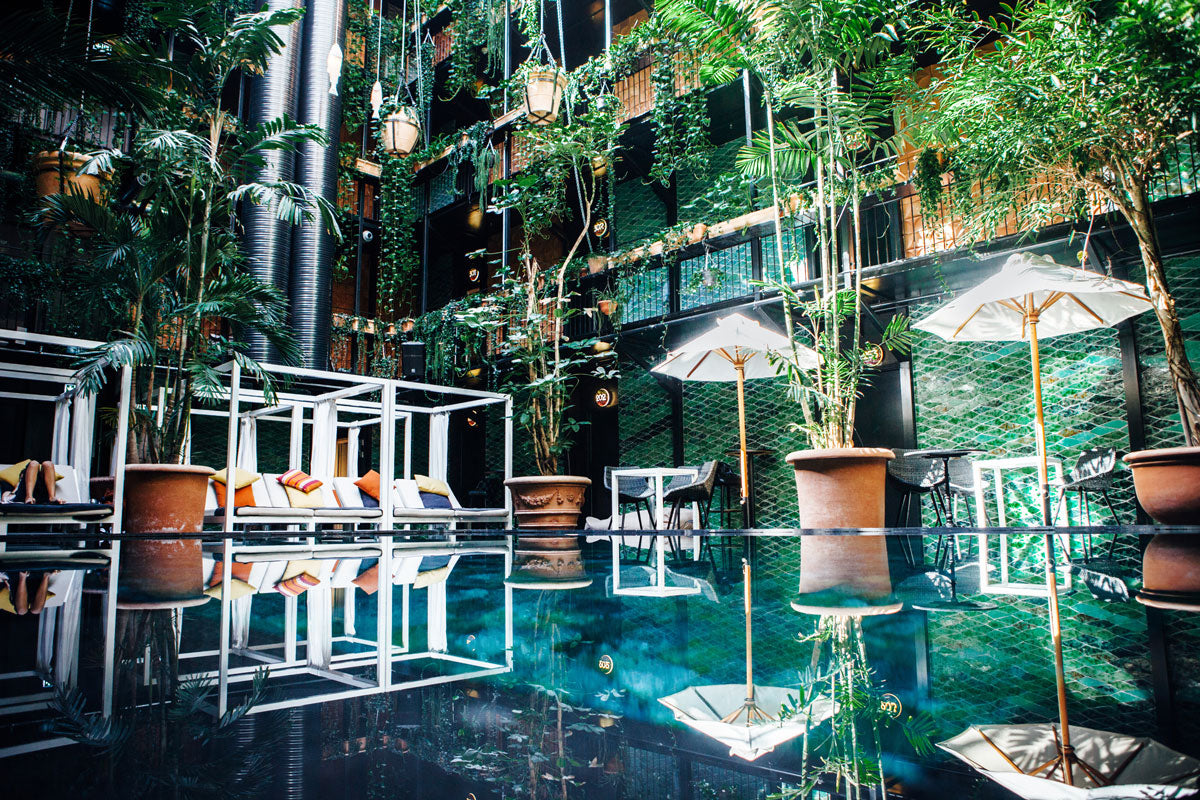
The social pool is a typology as old as construction itself. Swimming pools have always acted as people-agglutinating agents. Let us think about movies made in the United States during the 50’s decade, with neighbours sipping on dry martinis by the edge, in the movie The Swimmer, in pools located inside urban developments in Florida, in the pool at the roadside motel. Today, pools also make relationships easier and catalyze them. Some of them, like the ones in Freehand, Habita, Soho House, or Edition hotels are proud of their extroverted face. The one at Barcelona’s Edition, which opened a few months ago, is on the terrace and it is the perfect example of a leisure and social spot. The ones in Miami, located by the beach, also promote seduction. This word is essential within the universe of pools. Everything is light around a swimming pool. Everyone smiles while sitting on the edge and an easy smile, like those that come from wellness, are always, always seductive.
*THIS ARTICLE IS PART OF VOLUME 01 OF CONTAINER MAG


